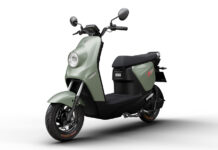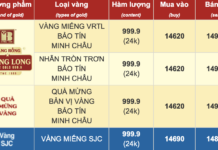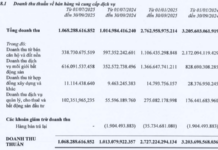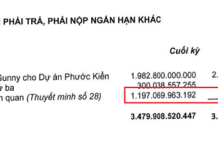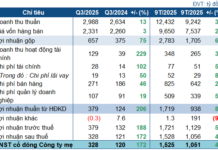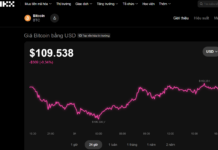In just one year, Vietnam’s dining scene witnessed the rise of incredibly affordable models: bubble tea at 7,000 VND per cup, hot pot at 69,000 VND per pot, and even coffee at 9,000 VND or a vegetarian buffet at 49,000 VND. These seemingly unbelievable prices quickly went viral on social media, creating a new wave of consumption, especially among younger customers.
Why has the “F&B Super Saver” trend emerged?
Mr. Nguyen Thai Binh, an F&B services expert and director of Concepts Academy (VCS), attributes the boom in the super-saving segment to three main reasons: “First, economic pressures are driving consumers towards down-trading (reducing the average value per purchase while maintaining the frequency of dining out). Second, Gen Z and Gen Alpha, who want to experience new things while mindful of their budgets, have become a significant consumer force. Third, the prices of 7,000 VND or 69,000 VND are merely ‘gateways’ to attract customers, with the real profits coming from toppings, combos, and additional orders.”
According to the expert, the 7,000 VND bubble tea directly targets the personal consumption of students, young workers, and those with a monthly income of less than 5 million VND. The price, which is similar to that of a bottle of mineral water, makes it easy for them to drink 2-3 cups a day.

Mr. Nguyen Thai Binh, F&B Services Expert and Director of Concepts Academy (VCS)
“The emergence of 7,000 VND bubble tea has created a new price anchor in customers’ minds. If 29,000 VND used to be considered cheap, now only 7,000-15,000 VND is acceptable. This has shaken up the 20,000-29,000 VND segment, which was the backbone of local bubble tea shops,” Mr. Binh analyzed.
On the other hand, the strategy for the 69,000 VND hot pot targets group experiences. Customers aged 16-28 usually come in groups of 3-6 people and are easily attracted by the “shockingly low price” advertised. However, once they sit down, they tend to order additional toppings ranging from 55,000-79,000 VND, side dishes from 39,000-69,000 VND, and drinks from 10,000-15,000 VND.
“As a result, the average spending per customer doesn’t stay at 69,000 VND but can reach up to 120,000-180,000 VND. This is a familiar bait pricing strategy but applied at the right time, causing a stir in the 120,000-250,000 VND hot pot market and putting pressure on the 99,000-138,000 VND buffet segment,” Mr. Binh noted.
Challenges for the Affordable Segment
According to Mr. Nguyen Thai Binh, the positive side of the “super-saving” wave is that it expands the market, making luxurious dishes accessible as affordable treats for everyone. However, the downside is that traditional affordable segments are facing challenges.
“The 7,000 VND bubble tea may raise concerns about ingredients and food safety, while the 69,000 VND hot pot faces the pressure of thin profit margins and the risk of saturation due to easy replication,” the F&B expert analyzed.
Specifically, the 20,000-29,000 VND segment for bubble tea and the 120,000-200,000 VND segment for hot pots are now sandwiched between the aggressive promotions of mid-range brands and the incredibly low prices of super-saving products.
“Without differentiation in quality, space, or brand, affordable eateries may disappear from the consumer map within the next 1-2 years,” warned Mr. Binh.
Given this situation, Mr. Binh suggested that brands need to reposition themselves and refrain from engaging in price wars. “A clear USP, such as ‘fresh tea – real toppings’ or ‘clean hot pot – fresh ingredients daily,’ will help retain customers. Additionally, creating value combos, investing in spatial experiences, and leveraging Food Apps to attract customers with cheap funnel products that rely on the main dish are essential.”
Mr. Binh also emphasized: “In the era of F&B super-saving, the winner is not the one who offers the lowest price but the one who turns that low price into a bait and retains customers through quality, experience, and intelligent upsell strategies.”
The E-commerce Wars: Amazon Warns Chinese Sellers Against Undercutting Prices on Temu
Amazon is facing a fierce battle to defend its home turf against the onslaught of rivals such as Temu, Shein, and TikTok Shop. The e-commerce giant, which has dominated the online retail space for decades, is now facing a formidable challenge from these emerging platforms that are quickly gaining traction among consumers. With their unique offerings and aggressive strategies, these competitors are threatening to erode Amazon’s market share and shift the landscape of online shopping. The battle for the e-commerce throne has begun, and Amazon is gearing up to protect its dominance in the face of this rising threat.
The Haunting Specter of Excess: Will China’s Electric Vehicles Be a Bargain Bonanza in Vietnam?
The Chinese electric vehicle industry is grappling with a production surplus crisis, prompting manufacturers to aggressively target the Vietnamese market with competitively priced offerings. However, entrenched perceptions about quality, coupled with aftersales service challenges and market stability concerns, cast a long shadow over the prospects of these vehicles gaining a strong foothold in Vietnam.





